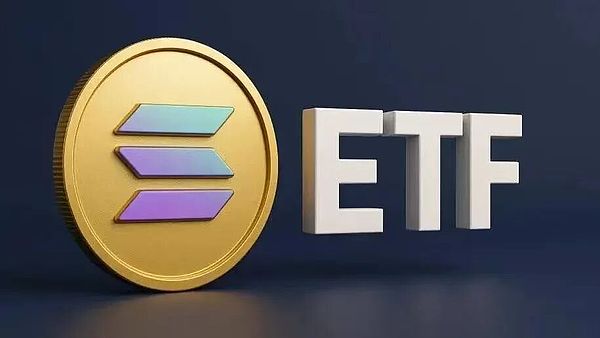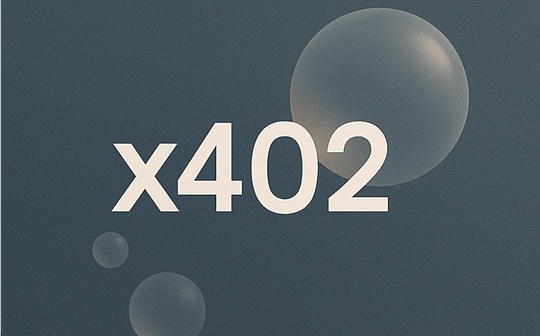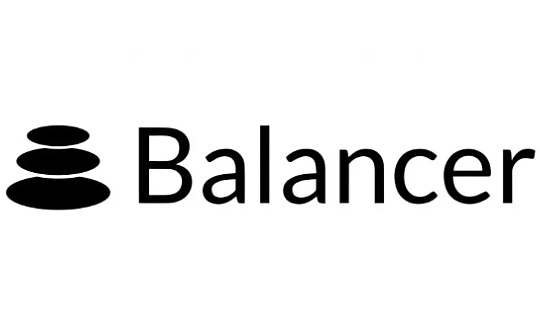
Author:Cathy

At the end of October 2025, the encryption world witnessed a historic scene.Solana (SOL) Breaks Last Regulatory Hurdles,Becomes the third crypto asset to receive spot exchange-traded product (ETP) approval in the United States, after Bitcoin and Ethereum.
This isn’t just “another ETF approved” boring news.Its approval process was full of drama, its product design had hidden mysteries, and the market reaction it triggered shocked countless traders.For those of us in the encryption industry,The landing of Solana ETF is not the end of a story, but the beginning of a story full of “insiders” and new opportunities.
01Wall Street’s “Civil War”
The “birth” of Solana ETF is extremely unusual.It wasn’t born out of a public vote and enthusiastic press release from the SEC (U.S. Securities and Exchange Commission),RatherTaking place during the chaotic period of the U.S. federal government shutdown.
During this unique window period when the functions of regulatory agencies were limited, two asset management giants—Bitwise and Grayscale (Grayscale)—showed amazing legal acumen.They take advantage of guidance issued by the SEC during this period, allowing S-1 registration statements to be filed without “delay amendment” will automatically take effect.
-
October 28:Bitwise Solana Staking ETF (ticker: BSOL) is the first to be listed on the New York Stock Exchange (NYSE).
-
October 29:Grayscale Solana Trust (ticker: GSOL) followed suit, successfully converting its trust product into an ETP.
This “regulatory raid” has jeopardized trillions of dollars of institutional capital and retail retirement accounts in the United States.A compliant Solana investment portal has been opened.
The data in the first week can be called “heavyweight”. According to the total number of Solana ETPs in the United States:
-
Cumulative net inflow in the first week: US$199.2 million
-
Total assets under management (AUM) quickly exceeded the US$500 million mark.
But “averages” obscure the truth.Behind this huge inflow of nearly US$200 million,It’s an extremely cruel, winner-takes-all game.“Civil War on Wall Street”.
-
Winner: Bitwise (BSOL), net inflow of $197 million in first week,Total assets under management (including seed funding): approximately US$420 million.
-
Loser: Grayscale (GSOL), first-week net inflow: $2.18 million,Total assets under management (including converted assets): approximately US$101 million.
You read that right.Among the new inflows of funds,Bitwise’s BSOL almost stole the show99%market share.This seemingly even contest actually had a winner on the first day.
Why is it so one-sided?The answer lies in the BSOL textbook“Three Elements of Blitzkrieg”:
Timing (faster one day, win them all):BSOL was listed on October 28 (Tuesday), while GSOL completed the conversion on October 29 (Wednesday).In the ETF world where liquidity is king, Bloomberg analysts pointedly pointed out: “Being just one day behind is actually huge. It makes competing much more difficult.”BSOL has successfully defined itself as the “authentic” Solana ETF.
Price (0.20% vs 0.35%): BSOL’s management fee is only 0.20%,And it’s completely free for the first three months or until AUM reaches $1 billion.In comparison, GSOL’s rates are as high as 0.35%.For budget-conscious institutional investors, this 0.15% annualized difference is something they cannot ignore.
Products (100% vs 77%):This is the most critical “secret weapon”.BSOL promised in its prospectus that it will100% of SOL assets are used for staking.GSOL only promised to pledge 77% of itassets.
To those outside the crypto community, this 23% difference may not matter.But for those in the know, this is exactly what makes the Solana ETF so revolutionary.
02“Interest-earning” ETFs
The launch of Solana ETF is more revolutionary in structure than Bitcoin ETF.
The Bitcoin ETF is just a safe for “digital gold.”You hold it and it doesn’t generate any income.And Solana is a proof-of-stake (PoS) asset, holding it (and staking it) is like owning a “digital real estate“.
The lure of “interest-bearing assets”
-
Yield crushing:Solana’s staking annualized yield (APY) is between 5% and 7%.thisNot only is it much higher than Ethereum’s yield of about 2%,It also provides a “unique source of income” for institutional investors.
-
narrative shift:Matt Hougan, Chief Investment Officer (CIO) of Bitwise, summed it up straightforwardly:“Institutional investors like ETFs, they like the income. Solana has the highest income of any blockchain. So institutional investors like the Solana ETF.”
-
The essence of the product:By investing in a Bitcoin ETF, you are betting on the price appreciation of “digital gold.”AndBy investing in Solana ETF, you not only bet on price appreciation, but also received a considerable cash flow (Staking income) that has nothing to do with traditional bonds and stocks.
The biggest “Easter egg” lies in the attitude of the SEC.
When Ethereum ETF is approved in 2024,“Pledge”The word is absolutely taboo.SThe EC abhorred the “security” nature of pledges and forced all issuers to delete relevant clauses overnight.
And this time,The SEC quietly “let it go.”It acquiesced to the launch of two “staking-containing” products, BSOL and GSOL.
This tacit consent,Marking a major shift in the SEC’s regulatory stance.It opens up a new “interest-bearing crypto-asset” track worth trillions for Wall Street.Institutions can now not only buy cryptocurrencies, but also “hire” these cryptocurrencies to work for them (staking them for interest) through compliant ETF vehicles.This is a fundamental game changer.
03Why did the price plummet due to the “huge profit”?
Just as Wall Street cheered this ETF victory,All traders staring at the K-line are in huge confusion:
If the ETF saw nearly $200 million in inflows in its first week, why is the price of SOL plummeting?
Data shows that after the launch of ETFs,Instead of rising, the price of SOL fell back sharply.On October 30, prices fell 8% in a single day and retreated 27% from the recent August high.It even fell as low as around $163.Well below the $300 people expected.
“Inflows increase, prices fall” – this anomaly caught many people off guard.But dig deeper into the data and you’ll findThis is not a sign of ETF failure;The result of the convergence of four powerful forces:
-
“Buy expectations, sell facts” (Sell the News):This is the most classic script.A large number of short-term traders lurk in the weeks (or even months) before an ETF is approved.Concentrate on profit-taking at the moment when “the news hits the ground”.
-
History repeats itself (Bitcoin):This is exactly the same trend after the launch of the Bitcoin ETF in January 2024.At the time, BTC prices also experienced a lackluster decline (around -5%) following the ETF’s launch, despite strong inflows.The real rally begins a few weeks later, when the “sell the news” selling pressure is fully absorbed.
-
The macro “perfect storm”:The timing of the launch of the Solana ETF could be called “hell difficulty“.It just hit the risk-off wave across the crypto market.During the same period (the week of October 27), Bitcoin ETFs were experiencing large-scale capital outflows of US$600 million to US$946 million, and the market as a whole was “bleeding.”
-
“Whale” Selling:This is the most fatal blow.On-chain data shows that on October 30, trading giant Jump Crypto——On the second day after BSOL was listed, 1.1 million SOL (worth approximately US$205 million) were exchanged for Bitcoin.
Now, let’s piece the clues together:
In a “perfect storm” where “news-selling” sentiment is high and Bitcoin ETFs bleed more than 600 million,A giant whale sold to the market$205 million SOL.
Under normal market conditions,This was enough to trigger a collapse in SOL prices.
However, in the last week of October 2025,This huge sell-off of $205 million was almost perfectly absorbed by the $199.2 million in new institutional buying brought by the Solana ETF (mainly BSOL).
This is the truth:The SOL ETF’s capital inflows showed astonishing results even as the market as a whole was bleeding.“relative strength”.A new group of institutional investors (ETF buyers) are directly responding to the sell-off of another group of established institutions (Jump Crypto).Not only is this not bearish, but it is a strong long-term bullish signal.This proves that a strong and steady stream of new institutional buying has formed.
04What’s the future for Solana ETF?
ETF approved, Wall Street’s next question is:How much capital can it attract?On this issue,addA huge divide has emerged between crypto-native companies and traditional financial giants:
-
Bullish Camp (Crypto Native):Zach Pandl, director of research at Grayscale, predicts,Solana ETPs over the next one to two years,Possible to absorb Solana’s total supply5%, which at current prices is equivalent toOver $5 billionof capital inflows.
-
Cautious camp (traditional finance):The giant JPMorgan (JPMorgan Chase) seems “out of place.”In a report, they forecast net inflows to the Solana ETF in the first yearOnly $1.5 billion.
whyJPMorgan ChaseSo conservative?Their reasons are:“Weak institutional awareness of Solana” and concerns over the “increasing dominance of meme coin trading” in its network activity.
J.P. Morgan’s concerns are representative of widespread anxieties in traditional finance:Solana is, after all, a high-tech financial infrastructure.Or is it a “Meme coin casino” full of speculators?
However, just two days after the ETF was listed,The entry of “new money” has completely ended the debate about Solana’s “casino or infrastructure”.
On October 30, 2025, global payment giant Western Union announced a major strategic move:Western Union has chosen the Solana blockchain as the issuance network for its new stablecoin, U.S. Dollar Payment Token (USDPT).It is planned to be launched in the first half of 2026.
Western Union clearly stated in the announcement,The reason for choosing Solana isIts “high performance”, “high throughput, low cost and instant settlement”.
The shock of this news far exceeds that of ETFs.it answered perfectlyquestion.You wouldn’t build a global remittance network on a “Meme coin casino”.Western Union bets its future core business on Solana,This is the strongest endorsement of Solana’s “financial infrastructure” attributes.
05Summary
The approval of the Solana ETF is not an endpoint, but the starting gun of a new era.It clearly demonstrates the two parallel tracks for organizations to adopt Solana:
-
Financialization Track (ETF):Wall Street asset managers such as Bitwise arePackage SOL (token) into an “interest-bearing” financial asset,Selling to their institutional clients.
-
Infrastructure Track (Western Union):Global businesses (such as Western Union)Solana (network) is being used as a “low-cost” financial infrastructure on which to build its ownown core business.
The two tracks will reinforce each other.The adoption of Western Union provides the strongest fundamental support for institutions that purchase ETFs; and the huge AUM and professional pledges brought by ETFs(Bitwise’s “New Wall Street” narrative), which in turn provides builders such as Western Union with a more secure and stable network.
whenWhile you are still worried about “Mime Coin”, Bitwise and Western Union have already proven with actions:Solana is not only the “New Wall Street”, it is the “new infrastructure” for Wall Street and global payments.The flywheels of financialization and infrastructure have begun to spin simultaneously..






